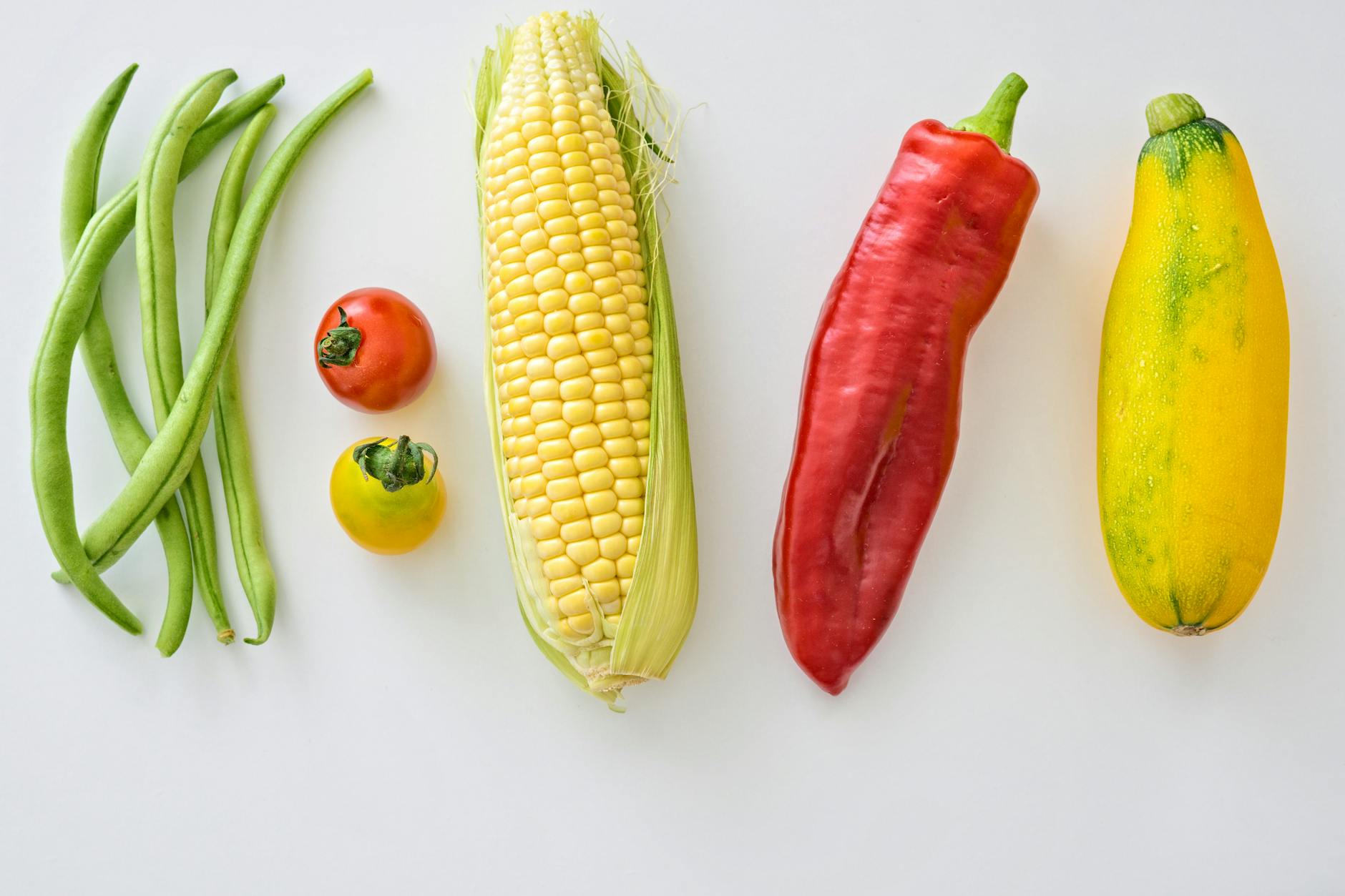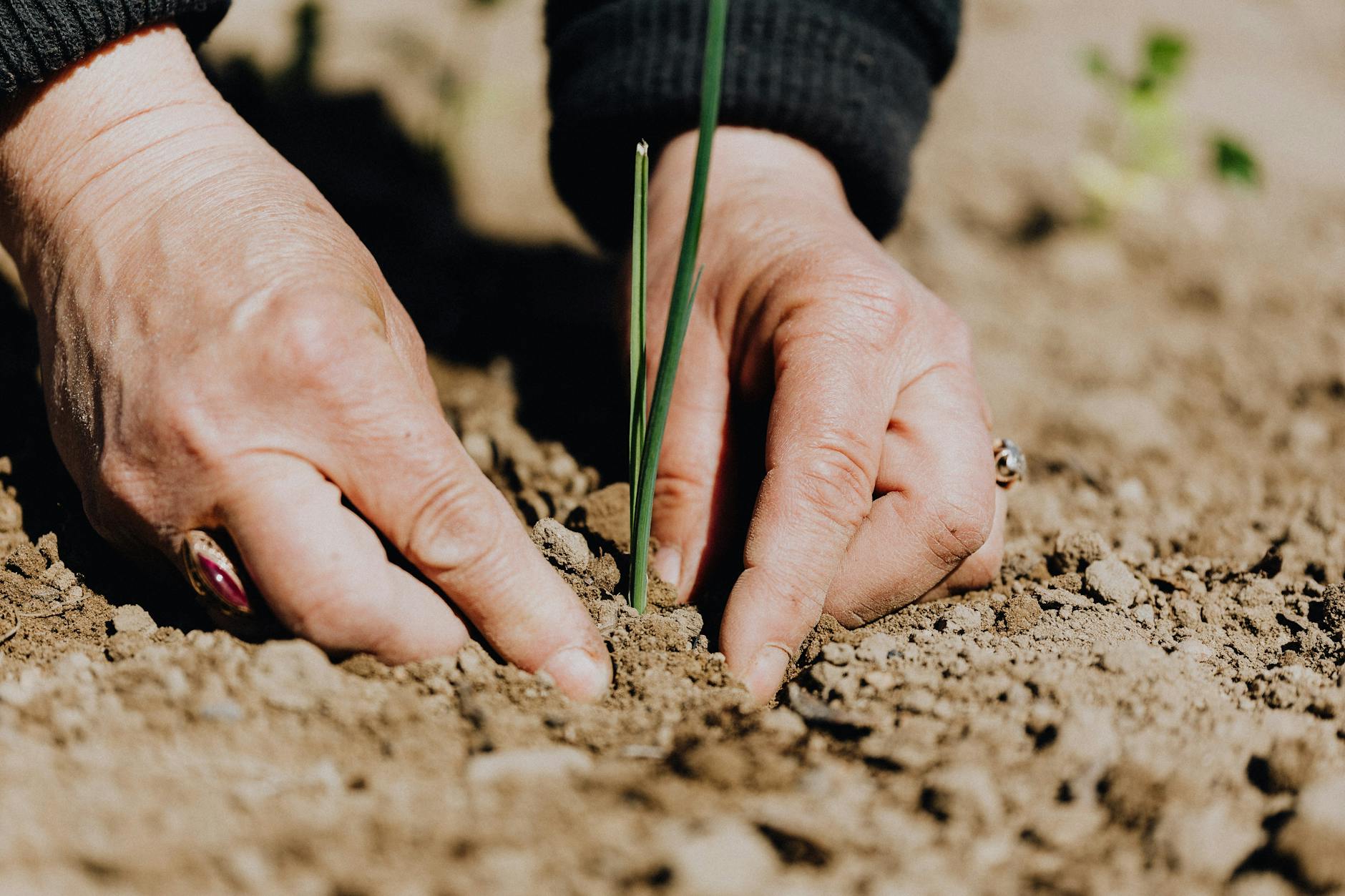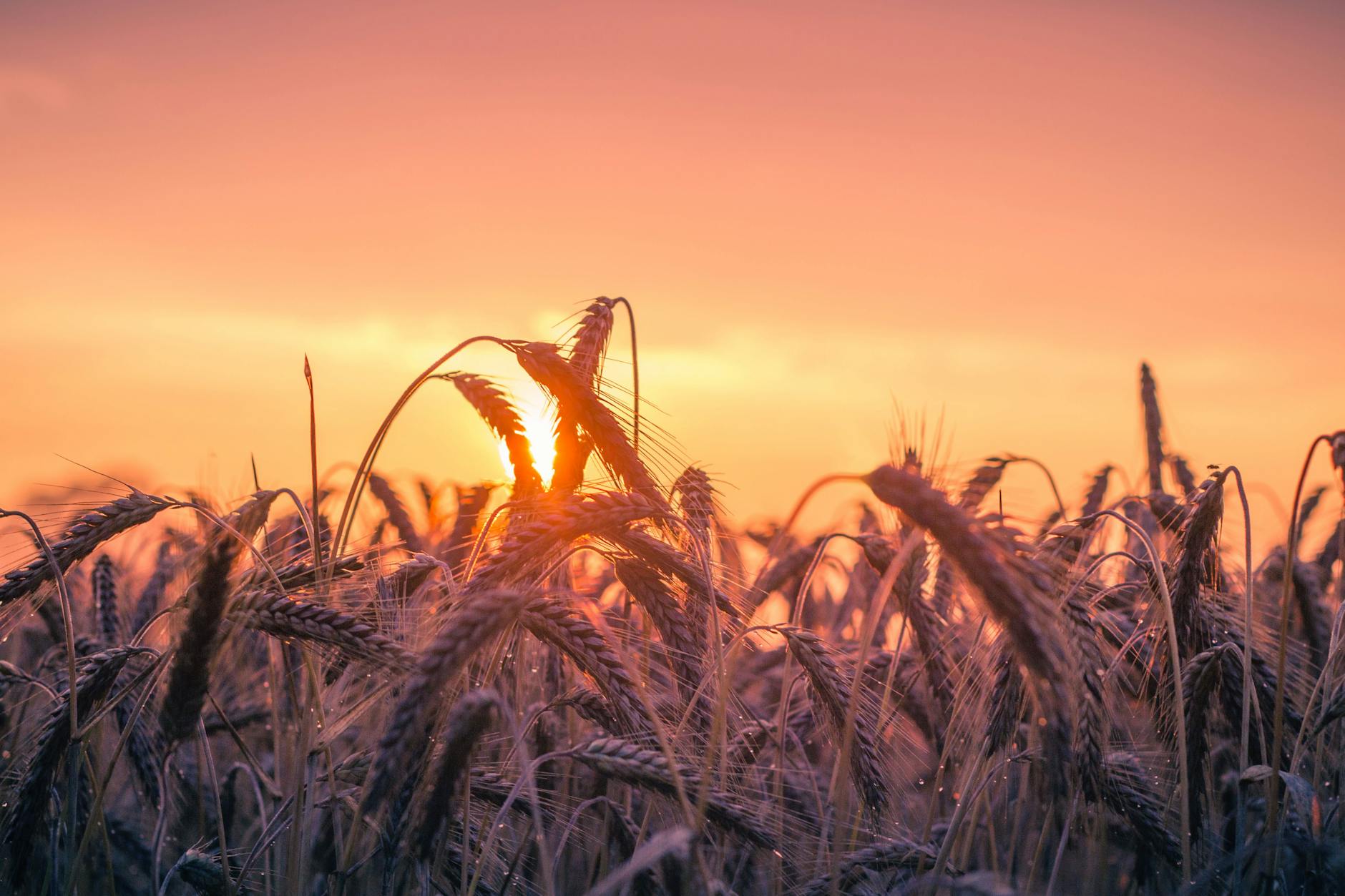Starting an organic garden is an exciting journey. It’s a chance to produce homegrown food that’s fresh and packed with nutrients. It brings us closer to nature and gives us control over what goes into the food we eat. But, how do you start an organic garden from scratch?
Think of the seed as the tiny package of potential that it is. It holds all the information necessary to grow a plant. Given the right conditions, it’ll sprout and grow into a healthy specimen, offering up delicious fruits or vegetables in due time.
Setting up an organic garden requires some planning. The location, soil, and the types of seeds to plant are essential factors to consider. This guide will walk through the process, offering insider tips and tricks to help your garden thrive.
Whether you’re a seasoned gardener or a novice, starting an organic garden is a rewarding endeavor. It’s an adventure that’s good for the environment, good for your health, and good for your soul. Let’s begin this journey from seed to harvest together.
Benefits of Starting an Organic Garden
Health Benefits
Are you looking for a way to improve your health and well-being? Starting an organic garden can be just the solution you need. By growing your own fruits, vegetables, and herbs, you have complete control over what goes into your food. Say goodbye to harmful pesticides, synthetic fertilizers, and genetically modified organisms (GMOs). Embracing organic gardening means embracing a healthier lifestyle.
Organic produce is not only free from toxic chemicals, but it also tends to be more nutrient-dense. Studies have shown that organic fruits and vegetables have higher levels of vitamins, minerals, and antioxidants compared to conventionally grown counterparts. By consuming these nutrient-rich foods, you can boost your immune system, improve digestion, and enhance overall vitality.
 Five Assorted Vegetables on White Surface (Photo by mali maeder)
Five Assorted Vegetables on White Surface (Photo by mali maeder)
Environmental Benefits
In addition to the positive impact on your health, starting an organic garden can also benefit the environment. Conventional agriculture relies heavily on synthetic chemicals that can harm ecosystems, pollute water sources, and deplete soil quality. By adopting organic gardening practices, you become an agent of change in preserving our planet.
Organic gardening promotes biodiversity by creating a habitat for beneficial insects, birds, and other wildlife. These natural allies assist in pollination, pest control, and maintaining a balanced ecosystem. Furthermore, organic practices focus on building and enriching the soil, ensuring its long-term fertility and sustainability. This means less reliance on synthetic fertilizers, reducing chemical runoff into waterways.
 Exotic butterfly on green leaf in park (Photo by Petr Ganaj)
Exotic butterfly on green leaf in park (Photo by Petr Ganaj)
Cost Savings
Many people assume that starting an organic garden is expensive, but the reality is quite the opposite. While there may be initial costs for tools, seeds, and soil amendments, the long-term savings can be significant. By growing your own organic produce, you can save money on grocery bills and reduce your reliance on store-bought produce.
Additionally, organic gardening encourages composting, which allows you to recycle kitchen scraps and yard waste. This organic matter can be transformed into nutrient-rich compost, eliminating the need for expensive fertilizers. By embracing this sustainable approach, you not only save money but also minimize waste and contribute to a greener future.
 Man in White Tank Top and Blue Denim Pants With Leaf Blower Outdoors during Daytime (Photo by Pixabay)
Man in White Tank Top and Blue Denim Pants With Leaf Blower Outdoors during Daytime (Photo by Pixabay)
Conclusion
Starting your own organic garden brings a multitude of benefits, from improving your health and the environment to saving money in the long run. By growing your own organic produce, you can take control of what you eat, reduce your carbon footprint, and contribute to a more sustainable world. Embrace the joys of organic gardening and experience the incredible rewards it offers. Stay tuned for more insights on how to transform your garden into an organic oasis.
Choosing the Right Location
When it comes to starting your own organic garden, choosing the right location is crucial. The success of your garden depends on factors like sunlight requirements and soil quality. In this section, we will explore these two aspects in detail to help you make an informed decision.
Sunlight Requirements
One of the key elements for a thriving organic garden is ample sunlight. Most vegetable and fruit plants require a minimum of six hours of direct sunlight each day. Therefore, it is essential to select a location that receives plenty of sunshine.
 Selective Color of Sunflower (Photo by 一 徐)
Selective Color of Sunflower (Photo by 一 徐)
To determine the best spot, observe your yard throughout the day. Look for areas that are unobstructed by trees, buildings, or other structures that might cast shadows. Keep in mind that the sun’s position changes throughout the seasons, so a location that is suitable in the summer may not receive enough sunlight during the winter months.
Soil Quality
Another crucial factor to consider when choosing the right location for your organic garden is the quality of the soil. Healthy soil provides the essential nutrients and minerals your plants need to grow and thrive.
 Ground level of unrecognizable female gardener planting green sprout in soil while working on plantation (Photo by Karolina Grabowska)
Ground level of unrecognizable female gardener planting green sprout in soil while working on plantation (Photo by Karolina Grabowska)
Before you begin planting, it’s recommended to test your soil to assess its pH level and nutrient content. You can purchase a soil testing kit or send a sample to a local agricultural extension office for analysis. Based on the results, you can amend the soil with organic matter, such as compost or aged manure, to improve its fertility.
Additionally, ensure that the chosen location has good drainage. Poorly drained soil can lead to root rot and other water-related issues. If your soil tends to retain water, consider raised beds or containers to provide better drainage for your plants.
By selecting a location with optimal sunlight and fertile soil, you are setting the foundation for a successful organic garden. Remember to regularly monitor these conditions and make any necessary adjustments to ensure your plants thrive throughout their journey from seed to harvest.
From Seed to Harvest: How to Start Your Own Organic Garden
Selecting Seeds and Seedlings
 Grass Field during Golden Hour (Photo by Pixabay)
Grass Field during Golden Hour (Photo by Pixabay)
When it comes to starting your own organic garden, selecting the right seeds and seedlings is crucial. In this section, we will explore the difference between organic and non-organic seeds and guide you in choosing the right varieties for your garden.
Organic vs. Non-Organic Seeds
Choosing whether to use organic or non-organic seeds is an important decision that will impact the overall quality and sustainability of your garden. Organic seeds are sourced from plants that have been grown without the use of synthetic pesticides, herbicides, or fertilizers. These seeds are carefully cultivated to ensure they are free from genetically modified organisms (GMOs) and have not been treated with any chemical substances.
On the other hand, non-organic seeds may come from conventional farming practices where synthetic chemicals are commonly used. These seeds might have been treated with fungicides or other substances to enhance their germination or growth. While non-organic seeds are widely available and may be less expensive, they do not align with the principles of organic gardening.
To ensure the integrity of your organic garden, it is recommended to opt for organic seeds. By using organic seeds, you can be confident that your garden will be free from harmful chemicals and maintain the natural balance of biodiversity.
Choosing the Right Varieties
 From above of small fresh parsley sprouts with soil on roots placed on white marble surface waiting for planting or healthy food adding (Photo by Karolina Grabowska)
From above of small fresh parsley sprouts with soil on roots placed on white marble surface waiting for planting or healthy food adding (Photo by Karolina Grabowska)
When selecting seeds and seedlings for your organic garden, it’s essential to consider the specific varieties that will thrive in your climate and meet your gardening goals. Here are a few factors to keep in mind when choosing the right varieties:
- Climate suitability: Different plants have specific temperature and climate requirements. Research which varieties are best suited for your region to ensure successful growth.
- Space availability: Consider the size and space requirements of the plants. If you have limited space, opt for compact varieties or those suitable for container gardening.
- Pest and disease resistance: Look for varieties that are naturally resistant to common pests and diseases in your area. This will reduce the need for chemical interventions and make your organic garden more resilient.
- Harvest time: Determine if you prefer plants that provide a continuous harvest or those that produce a bountiful yield all at once. This will help you plan your garden and ensure a steady supply of fresh produce.
- Flavor and culinary preferences: Consider the taste and culinary uses of different varieties. Choose plants that align with your preferences and will enhance your culinary adventures.
Remember, variety is the spice of life, and the same goes for your organic garden. Experiment with different varieties to discover new flavors and textures that will excite your taste buds.
By carefully selecting organic seeds and choosing the right varieties, you are taking the first steps toward a successful organic garden. In the next section, we will delve into the process of preparing your soil for planting. Stay tuned for more organic gardening tips!
From Seed to Harvest: How to Start Your Own Organic Garden
Preparing the Soil
Before you can begin planting your organic garden, it’s crucial to prepare the soil properly. This step sets the foundation for a thriving garden and ensures that your plants receive the nutrients they need to grow and flourish. In this section, we will explore two essential aspects of soil preparation: clearing weeds and debris and adding compost and organic matter.
Clearing Weeds and Debris
 Shallow Focus of Moss (Photo by Silas)
Shallow Focus of Moss (Photo by Silas)
To create a healthy environment for your plants, it’s essential to remove any weeds and debris from the soil. Weeds compete with your plants for nutrients, water, and sunlight, hindering their growth. Start by manually pulling out any visible weeds or use a gardening tool like a hoe to uproot them effectively. Remember to remove the entire weed, including the roots, to prevent regrowth.
Once the weeds have been cleared, take a moment to remove any debris, such as rocks or twigs, that may obstruct root growth. This ensures that your plant’s roots have ample space to spread out and access the nutrients they need.
Adding Compost and Organic Matter
 Photo of Small Pieces of Plastic Garbage (Photo by Sébastien Vincon)
Photo of Small Pieces of Plastic Garbage (Photo by Sébastien Vincon)
The next step in soil preparation is to add compost and organic matter. Compost is a fantastic natural fertilizer that enriches the soil with essential nutrients, improves its structure, and promotes beneficial microbial activity. It also helps retain moisture, which is crucial for the overall health of your garden.
To add compost to your soil, start by spreading a layer of it evenly over the surface. Then, use a garden fork or shovel to gently incorporate the compost into the top few inches of the soil. This ensures that the nutrients are distributed throughout the soil, providing an optimal growing environment for your plants.
In addition to compost, consider incorporating other organic matter, such as well-rotted manure or leaf mold. These materials further enhance the soil’s fertility, texture, and water-holding capacity, creating an ideal habitat for your plants.
By clearing weeds and debris and adding compost and organic matter, you set the stage for a successful organic garden. The cleared soil provides a clean slate for your plants to grow, while the addition of nutrient-rich compost and organic matter ensures they have the resources necessary to thrive. Now that your soil preparation is complete, you’re one step closer to enjoying the bountiful harvest your organic garden will produce. Stay tuned for the next section on selecting the right seeds for your garden!
Planting and Transplanting
Seed Planting Techniques
When starting your own organic garden, one of the first and most essential steps is planting seeds. This simple yet crucial process sets the foundation for a successful harvest. By properly planting your seeds, you give them the best chance to sprout and thrive. Let’s explore some seed-planting techniques to help you get started.
- Prepare the soil: Before planting your seeds, ensure that the soil is nutrient-rich and well-drained. Clear any debris, remove weeds, and loosen the soil with a garden fork or tiller. This will create an ideal environment for your seeds to take root.
- Choose the right depth: Different seeds require different planting depths. As a general rule, smaller seeds should be planted shallowly, while larger ones can be buried deeper. Be sure to consult the seed packet or reference guide for specific instructions.
- Sow with care: Take your time when sowing the seeds. Depending on the size of the seeds, you can either sprinkle them evenly or space them apart. Gently press the seeds into the soil, ensuring good soil-to-seed contact.
- Water thoroughly: After planting, give your seeds a good drink of water. This will help the soil settle and provide the moisture necessary for germination. Use a gentle spray or a watering can to avoid displacing the seeds.
- Label your plants: To keep track of what you’ve planted, it’s essential to label each row or container. Use plant markers or popsicle sticks to indicate the plant’s name and the date of planting. This will help you remember what’s what as your garden grows.
 People Holding Coffee Seeds (Photo by Julian Jimenez Martinez)
People Holding Coffee Seeds (Photo by Julian Jimenez Martinez)
Transplanting Seedlings
Once your seeds have sprouted and developed into seedlings, it’s time to transplant them into their permanent spots in the garden. Transplanting is a delicate process that requires careful handling to minimize stress and ensure successful growth. Let’s dive into some tips for transplanting seedlings effectively.
- Choose the right time: Transplanting should be done when the seedlings have developed their first true leaves and are large enough to handle. Avoid transplanting in extreme weather conditions, such as excessive heat or cold.
- Prepare the soil: Just like with seed planting, prepare the soil in the new planting area. Remove any weeds or debris and ensure the soil is well-drained and nutrient-rich. This will provide a favorable environment for the young seedlings.
- Handle with care: When removing the seedlings from their containers, be gentle to avoid damaging the roots. Hold the seedling by its leaves rather than the stem, as the stem is fragile and can easily break. If the roots are tightly packed, gently loosen them before planting.
- Dig the right hole: Dig a hole in the new planting area that is slightly larger than the root ball of the seedling. This will allow the roots to spread out and establish themselves more easily. Place the seedling in the hole, making sure it sits at the same depth as it did in its original container.
- Water and protect: After transplanting, water the seedlings thoroughly to settle the soil around the roots. Consider using a light layer of mulch to help retain moisture and suppress weeds. Protect the seedlings from the harsh sun or strong winds by providing temporary shade or using plant covers.
 Person Holding Green Leaf (Photo by ROCKETMANN TEAM)
Person Holding Green Leaf (Photo by ROCKETMANN TEAM)
By mastering the art of seed planting and transplanting, you’re well on your way to cultivating a thriving organic garden. These techniques, when executed with care and attention, will give your plants a strong start and set the stage for a bountiful harvest. Stay tuned for more tips and guidance on your journey from seed to harvest!
From Seed to Harvest: How to Start Your Own Organic Garden
Watering and Irrigation
Watering and irrigation are essential aspects of maintaining a healthy and thriving organic garden. Providing your plants with the right amount of water at the right time will ensure optimal growth and productivity. In this section, we will explore effective watering techniques and efficient irrigation systems to help you achieve success in your organic gardening endeavors.
Watering Techniques
Proper watering techniques are crucial in preventing both under-watering and over-watering, which can lead to stunted growth or root rot. Here are some tips to help you become a watering pro:
- Water deeply: When you water your plants, make sure to saturate the soil thoroughly to encourage deep root growth. This will help your plants become more resilient to drought conditions.
- Water early in the morning: Watering your garden in the early morning allows the plants to absorb moisture before the heat of the day evaporates it. This also minimizes the risk of diseases caused by prolonged moisture on the foliage.
- Avoid overhead watering: While it may be tempting to use a sprinkler or hose to water your garden, it’s best to avoid overhead watering whenever possible. Instead, aim for targeted watering at the base of the plants to minimize water wastage and reduce the risk of leaf diseases.
- Observe the signs: Learn to read your plants’ signals to determine when they need watering. Wilting, dry soil, and yellowing leaves are all indicators that your plants are thirsty and in need of hydration.
Efficient Irrigation Systems
In addition to manual watering, incorporating efficient irrigation systems can save time, water, and effort in maintaining your organic garden. Consider implementing some of these options:
- Drip irrigation: This system delivers water directly to the plant’s roots, minimizing evaporation and ensuring efficient water usage. Drip irrigation is particularly beneficial for gardens with dense plantings or when you’re away from your garden for extended periods.
- Soaker hoses: Similar to drip irrigation, soaker hoses release water directly into the soil along their length. They are easy to install and can be used in raised beds, vegetable gardens, or around trees and shrubs.
- Rainwater harvesting: Utilize rain barrels or tanks to collect and store rainwater for later use in your garden. This not only conserves water but also provides a natural source of hydration for your plants, free from chemicals typically found in tap water.
- Smart irrigation systems: Consider investing in smart irrigation systems that use weather data and soil moisture sensors to automatically adjust watering schedules and conserve water. These systems are becoming increasingly popular and can be controlled via smartphone apps for convenience.
 Woman Holding a Watering Can (Photo by Kampus Production)
Woman Holding a Watering Can (Photo by Kampus Production)
Remember, finding the right balance between watering and irrigation is key to maintaining a healthy organic garden. By implementing these techniques and utilizing efficient irrigation systems, you can ensure your plants receive the optimal amount of water, resulting in lush, thriving vegetation and a bountiful harvest. Stay tuned for the next section of our series on organic gardening: “Organic Pest Control.”
*Note: The image placeholder is for representation purposes only and does not depict the exact image.
Organic Pest Control
Companion Planting
Have you ever wondered how to keep pests away from your precious organic garden without resorting to harmful chemicals? Well, companion planting might just be the solution you’ve been looking for! This age-old technique involves growing different plants together that have beneficial relationships, helping to repel pests naturally.
One popular example of companion planting is the combination of tomatoes and marigolds. Planting marigolds around your tomato plants can deter pests such as aphids and nematodes. The strong scent of marigolds acts as a natural repellent, keeping these pesky insects at bay. Plus, the vibrant colors of marigolds add a touch of beauty to your garden as well!
Another fantastic pairing is the combination of basil and tomatoes. Not only do these two plants complement each other in the kitchen, but they also work together in the garden. Basil repels flies and mosquitoes, while tomatoes repel certain pests that affect basil. Talk about a win-win situation!
Natural Pest Deterrents
If you’re looking for some additional natural ways to keep pests away from your organic garden, look no further! There are several effective pest deterrents that you can easily incorporate into your gardening routine.
One simple method is to create physical barriers using materials such as netting or row covers. These barriers prevent pests from reaching your plants, reducing the risk of damage. They are especially useful for protecting young seedlings from hungry critters like rabbits and birds.
Another effective technique is attracting beneficial insects to your garden. Ladybugs, lacewings, and parasitic wasps are natural predators of many garden pests. You can attract these helpful insects by planting flowers such as daisies, cosmos, and yarrow. These beautiful blooms not only add color to your garden but also act as a beacon for beneficial insects.
Homemade Organic Pest Sprays
If pests are persistently causing havoc in your garden, it may be time to bring out the big guns — homemade organic pest sprays! These sprays are easy to make using ingredients you probably already have in your kitchen.
One popular recipe involves mixing garlic, onion, and cayenne pepper with water. Simply blend these ingredients together, strain the mixture, and spray it on your plants. The strong scent and taste of these ingredients act as a deterrent to pests, keeping them away from your precious crops. Just be sure to test the spray on a small portion of your plants first to ensure it doesn’t cause any damage.
Another effective homemade spray combines neem oil, liquid soap, and water. Neem oil is derived from the neem tree and has natural insecticidal properties. Mix a few tablespoons of neem oil with a teaspoon of liquid soap and a gallon of water. Shake well, and spray this mixture on your plants to combat a variety of pests, including aphids, whiteflies, and caterpillars.
 Woman in White Dress Standing Near Green Plants (Photo by cottonbro studio)
Woman in White Dress Standing Near Green Plants (Photo by cottonbro studio)
With companion planting, natural pest deterrents, and homemade organic pest sprays, you have a variety of effective tools at your disposal to keep pests away from your organic garden. Say goodbye to harmful chemicals and hello to a healthier, more sustainable approach to gardening!
Conclusion
In conclusion, starting your own organic garden is a rewarding and fulfilling experience. By following the steps outlined in this blog post, you can go from seed to harvest and enjoy the many benefits of growing your own organic produce. Remember to choose a suitable location, prepare the soil properly, select the right seeds or seedlings, provide adequate watering and nutrients, and protect your plants from pests and diseases. With time, patience, and a little bit of effort, you can create a thriving organic garden that will provide you with fresh and healthy fruits, vegetables, and herbs. So, roll up your sleeves, grab your gardening tools, and embark on this exciting journey of cultivating your own piece of nature!